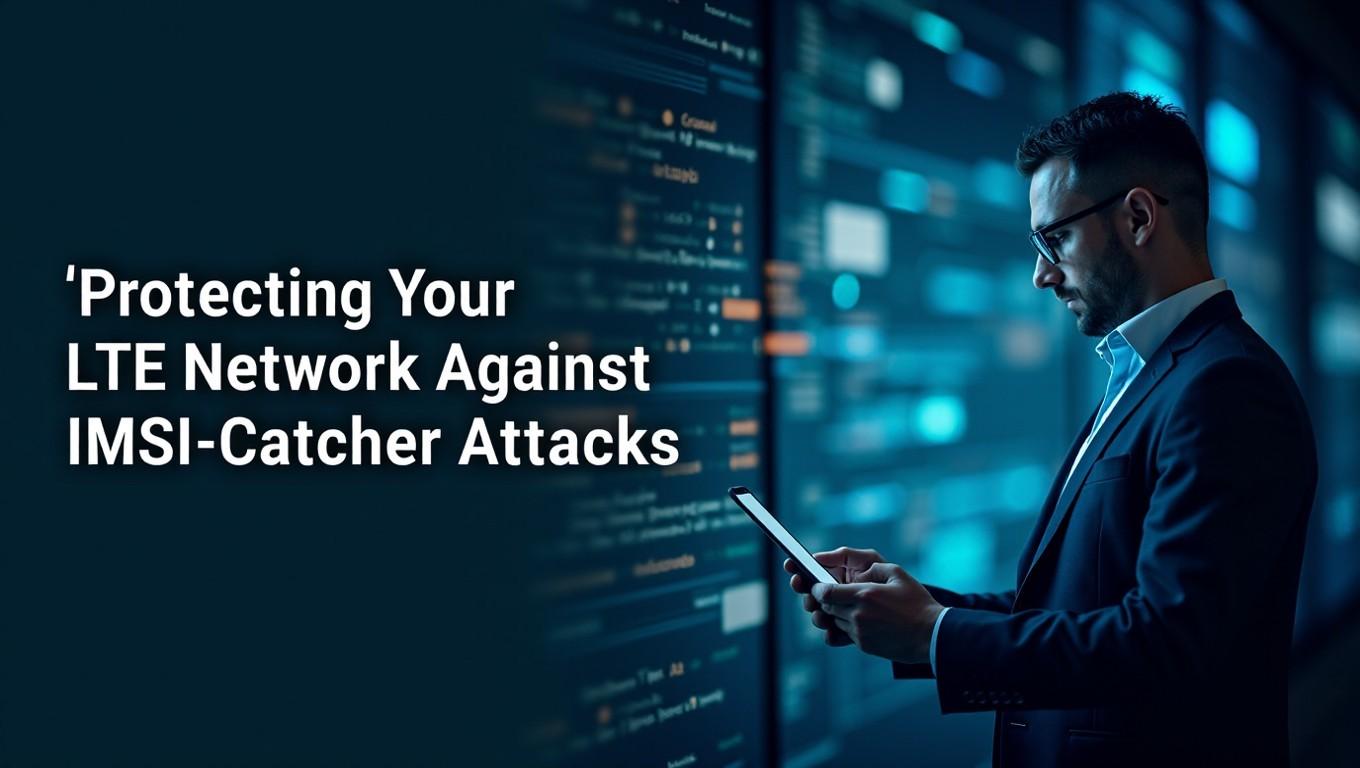In an era where mobile technology has become as ubiquitous and integral to our lives as breathing, the concept of IMSI-catchers, also known as “Stingrays”, poses a significant threat. These devices mimic legitimate cell towers, tricking nearby phones into connecting to them. This can lead not only to surveillance but also to potential breaches in privacy and security.
The Risks of IMSI-Catchers: A Growing Concern
IMSI-catcher attacks are a growing concern for LTE network users. The International Mobile Subscriber Identity (IMSI) is the unique identifier stored on your SIM card that telecom providers use to authenticate and route communications. By intercepting this information, an attacker can track your location, monitor metadata, and even exploit vulnerabilities in one-time passwords (OTPs).
While 4G LTE networks boast enhanced security measures compared to their predecessors, they are not immune to these threats. As LinkedIn experts have pointed out, IMSI catchers can exploit weaknesses in the LTE protocol and force downgrades to less secure networks like 2G or 3G. This means that even if your phone is on a seemingly secure network, it could still be vulnerable.
How to Detect an IMSI-Catcher: Signs to Look Out For
Detecting the presence of an IMSI-catcher can be challenging, but there are certain signs that may indicate its activity. Users should pay attention to sudden drops or fluctuations in signal strength and quality, unusual network names or codes appearing on their phone screens, or unexpected disruptions in connectivity.
- Signal Strength: A sharp drop in signal strength can sometimes be a sign of an IMSI-catcher at work. These devices often operate by jamming the signals of legitimate cell towers to force connections onto them.
- Network Names: Seeing unfamiliar network names or codes (e.g., “IMSI catcher” or generic names like “Unknown Network”) can be a red flag indicating your phone is connected to an unauthorized base station.
Fortunately, there are tools available that can help users monitor and analyze the parameters of their LTE connections. Apps such as SnoopSnitch, AIMSICD, or Cell Spy Catcher can scan the radio spectrum, measure signal strength, frequency, encryption level, and identity of nearby base stations, providing insights into whether your phone is in a secure connection.
Vulnerable to Exploits: How IMSI-Catchers Can Compromise Your Security
The primary method by which IMSI-catchers exploit LTE networks involves tricking devices into connecting via lower network protocols. These older protocols often lack the robust encryption and authentication features found in modern 4G LTE systems.
- Location Tracking: Once a phone is connected to an IMSI-catcher, the device can track your location with relative ease.
- Metadata Intercept: Metadata such as call logs and communication numbers are particularly vulnerable. However, intercepting actual content like calls or texts usually requires additional tools that force downgrades to 2G networks.
In addition, SMS-based one-time passwords (OTPs) can be intercepted if your communications are forced onto less secure networks. This is a significant risk for anyone using OTPs as part of their authentication processes.
Protecting Your LTE Network: Practical Steps to Take
To protect yourself from IMSI-catcher attacks, there are several practical steps you can take:
- Avoid SMS-based OTPs: Use app-based authenticators instead. Tools like Authy or Google Authenticator provide a secure alternative that does not rely on potentially insecure cellular networks.
- Prioritize Encrypted Communication: Messaging apps with end-to-end encryption, such as Signal or WhatsApp, can help safeguard sensitive information. Even if intercepted, the data remains inaccessible without decryption keys.
- Suspicious Activity Monitoring: Stay vigilant for signs of IMSI-catcher activity. Sudden signal fluctuations and reconnections might indicate a problem.
If you suspect that your phone is connected to an IMSI-catcher, switching to airplane mode can immediately sever all network connections. Reconnecting cautiously in a known secure location can help prevent further exposure.
Call Us To Hack Conveniently: A Cautionary Tale
In today’s digital age, the threat of cyberattacks is omnipresent. While many focus on protecting their devices from malware and phishing scams, one often overlooked area of concern is the vulnerability of LTE networks to IMSI-catcher attacks.
Services like call us to hack conveniently, which claim to offer hacking services, pose a real threat. These entities can exploit weaknesses in mobile networks for malicious purposes.
The Importance of Security Measures: An Urgent Call to Action
While the implementation and enforcement of strict security standards by network operators are crucial, users also have a responsibility to protect their devices. Awareness and education about these risks are key steps towards better protection.
- Educate Yourself: Stay informed about common threats such as IMSI-catchers and the methods used to mitigate them.
- Promote Transparency: Advocate for more transparency from network operators regarding their security measures and protocols. This can help ensure that users have access to accurate information about potential vulnerabilities.
Moreover, supporting initiatives aimed at enhancing privacy rights and cybersecurity standards is essential. By pushing for stronger regulations and better practices, users contribute to a safer digital environment.
Note: For more detailed information on IMSI-catcher threats and security measures, consult resources such as the Electronic Frontier Foundation’s guide.
In summary, protecting your LTE network from IMSI-catchers requires a multi-faceted approach. By staying informed about potential risks and taking practical steps to secure your devices, you can minimize the chances of falling victim to these sophisticated cyber threats.
